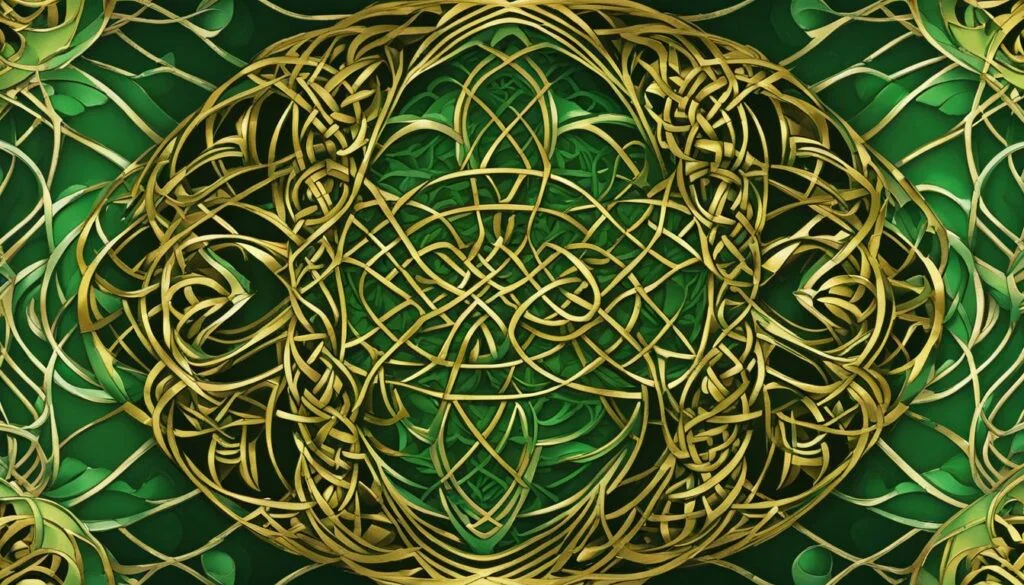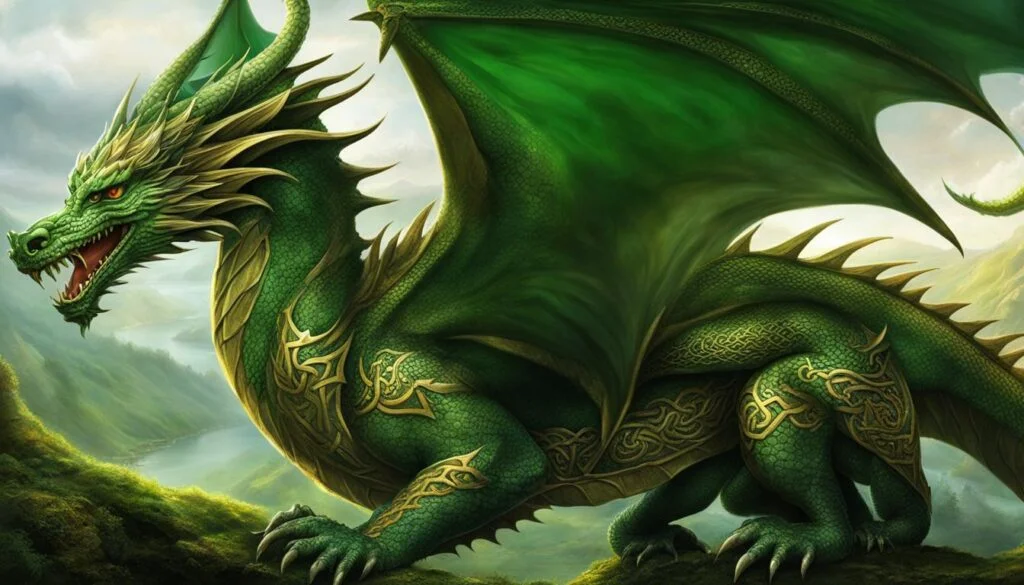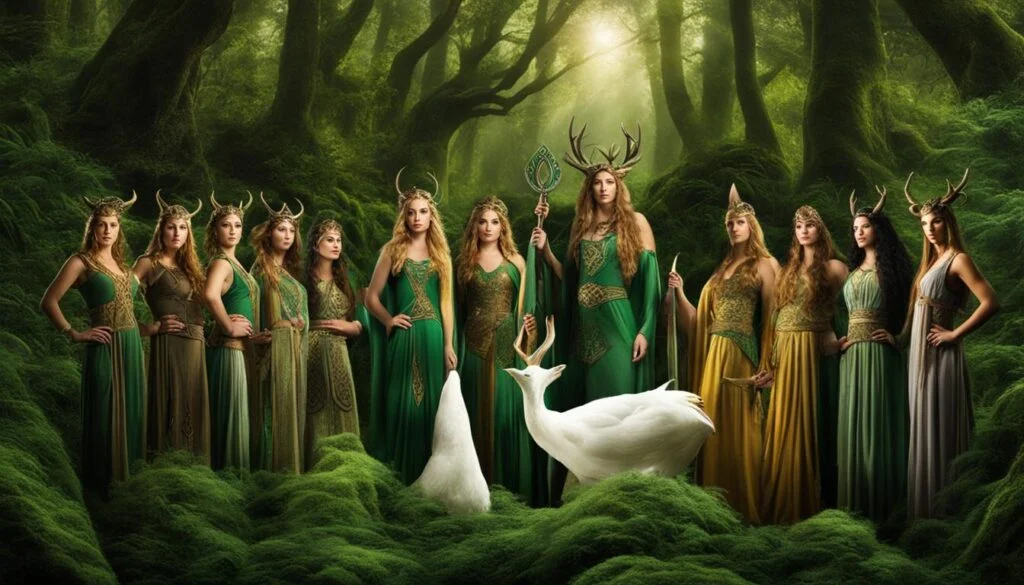Welcome to our exploration of Celtic knots, a fascinating aspect of Celtic culture that holds deep cultural and spiritual significance. These intricate symbols have captivated people for centuries, with their origins dating back to ancient Celtic times. Join us as we unravel the meanings and delve into the age-old mystique of Celtic knots.
Celtic knots are not just beautiful designs, but they also tell stories and represent various elements of Celtic culture. From symbols of spirit and deities to depictions of mythological tales, Celtic knots can be found in monuments, manuscripts, and artwork from ancient times.
The meaning of Celtic knots is open to interpretation and can vary depending on the specific design and historical context. Each knot has its own unique symbolism, adding to the rich tapestry of Celtic culture.
Throughout this article, we will dive deeper into the history, significance, and interpretation of Celtic knots. Join us on this journey as we uncover the ancient Celtic knot designs and explore their cultural and spiritual meaning.
Key Takeaways:
- Celtic knots hold deep cultural and spiritual significance in Celtic culture.
- These intricate symbols represent different elements of Celtic culture and can be found in monuments, manuscripts, and artwork from ancient times.
- Each Celtic knot has its own unique symbolism and meaning, open to interpretation and varying depending on the design and historical context.
- Join us on this exploration of Celtic knots as we uncover the ancient designs and delve into their rich cultural and spiritual significance.
The Stories Behind Traditional Scottish Symbols
Scottish culture is rich with iconic symbols that hold deep historical and cultural significance. These symbols reflect the unique heritage and traditions of Scotland, captivating both locals and visitors alike. Let’s explore some of the most prominent Scottish symbols and the stories behind them.
The Saltire: Scotland’s Emblem
The Saltire, also known as the Scottish flag, is one of the oldest and most recognizable Scottish symbols. Its white diagonal cross on a blue background represents Scotland’s patron saint, Saint Andrew. According to legend, Saint Andrew was crucified on an X-shaped cross, which is believed to be the origin of the Saltire’s design. Today, the Saltire proudly flies across Scotland, signifying national identity and unity.
The Lion Rampant: Strength and Royalty
An emblem of strength and royalty, the Lion Rampant is considered the unofficial flag of Scotland. It has been used as the Arms of the Kingdom of Scotland for centuries, symbolizing Scotland’s power and sovereignty. The Lion Rampant represents the fierce spirit and noble heritage of the Scottish people, serving as a reminder of their historical significance.
The Thistle: Scotland’s Resilience
The thistle, Scotland’s national flower, has an intriguing story that dates back to ancient times. Legend has it that a group of Viking invaders stepped on thistles while attempting to surprise attack a Scottish camp at night. The loud screams from the injured Vikings awakened the Scots, enabling them to successfully defend their camp. The thistle’s prickly nature came to symbolize Scotland’s resilience and the protection of its people.
The Unicorn: Mythical Heraldry
The national animal of Scotland is the unicorn, a legendary creature with a single horn. In Scottish heraldry, the unicorn is often depicted as a symbol of purity, grace, and strength. The unicorn’s inclusion in Scottish heraldry reflects Scotland’s historical connection to heraldic practices and its mythical identity. Today, the unicorn remains an enduring symbol of Scotland’s rich cultural heritage.
These Scottish symbols, including the Saltire, Lion Rampant, thistle, and the unicorn, are cherished parts of Scottish culture. They represent the nation’s history, traditions, and values, serving as powerful reminders of Scotland’s unique identity in the world.
Unraveling the Meaning of Celtic Symbols
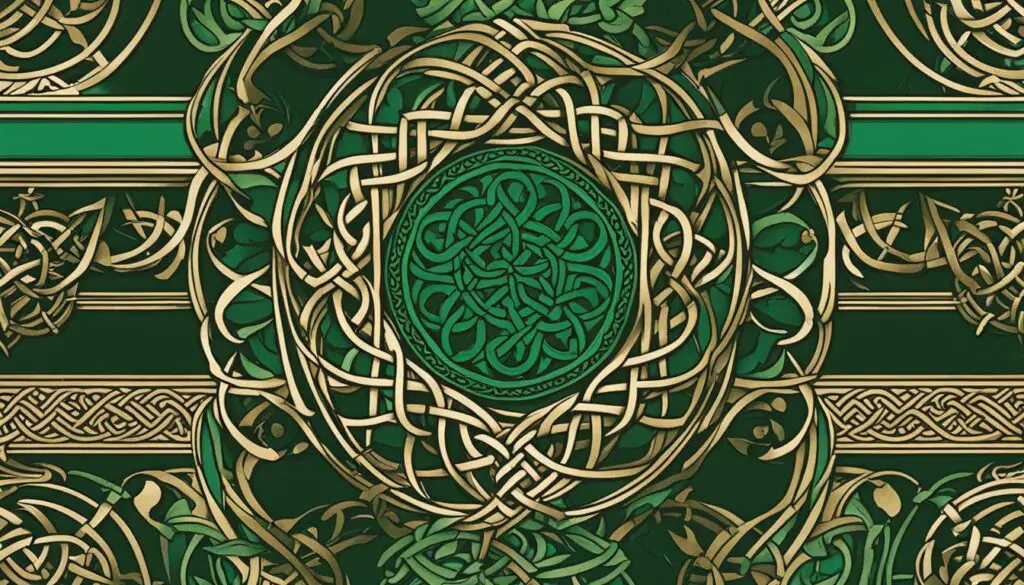
Celtic symbols hold deep meanings and symbolize important values such as faith, love, and loyalty. Let’s explore the significance of some popular Celtic symbols:
Triquetra
The Triquetra, also known as the Trinity Knot, symbolizes the Holy Trinity in Christianity. It represents the unity of the Father, Son, and Holy Spirit.
Celtic Cross
The Celtic Cross features an interwoven design and represents the fusion of Christianity and Celtic culture. It holds both religious and cultural significance.
Celtic Knot
The Celtic Knot is a common symbol found in monuments, manuscripts, and artwork. It is often used as a decorative element and does not have a specific philosophical or religious meaning.
Celtic Shield Knot
The Celtic Shield Knot signifies protection. It is often worn as an amulet or talisman to ward off negative energies and provide spiritual safeguarding.
Spiral Knot
The Spiral Knot, also known as the Triskelion, represents various trios such as life, birth, and death. It symbolizes the cyclical nature of existence and the interconnectedness of these three fundamental aspects of life.
Green Man
The Green Man is a symbol that represents the harmonious relationship between mankind and nature. It is often depicted as a face surrounded by leaves or foliage, symbolizing the vitality and interconnectedness of the natural world.
Claddagh
The Claddagh is a traditional Celtic symbol that represents love, unity, and loyalty. It features two hands holding a heart, topped with a crown, symbolizing friendship, love, and loyalty respectively.
The Significance of Celtic Knots in Celtic Culture
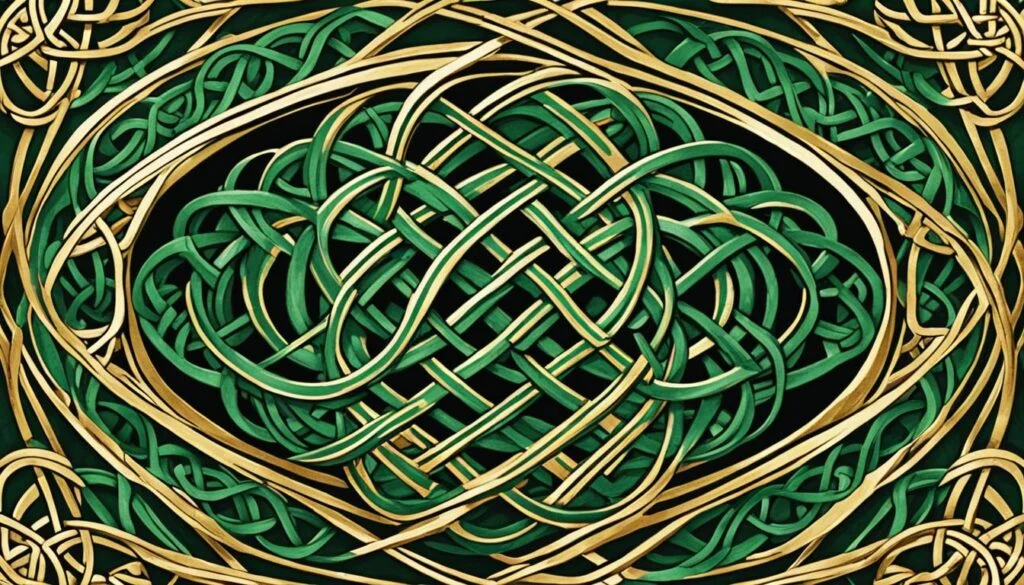
Celtic knots have a profound significance in Celtic culture and are revered as sacred symbols. These intricate knots were created by the ancient Celts and were believed to possess powerful mystical powers. They were often worn as amulets or talismans to protect against dark forces and to bring good luck.
The interwoven patterns of Celtic knots symbolize the interconnectedness of all things in the universe. They represent the eternal cycle of life, including birth, death, and rebirth. The complexity and beauty of these knots reflect the deep spiritual beliefs of the Celts and their profound connection to nature.
The Celts regarded Celtic knots as more than mere decorative elements. They held deep spiritual and cultural significance, serving as powerful reminders of their heritage and beliefs. These sacred symbols continue to be cherished and celebrated as a testament to the enduring legacy of Celtic culture.
Key Points:
- Celtic knots are sacred symbols in Celtic culture.
- They were believed to possess powerful mystical powers.
- Celtic knots represent the interconnectedness of all things in the universe.
- They symbolize the eternal cycle of life.
- The intricacy and beauty of Celtic knots reflect the Celts’ deep connection to nature.
The Evolution and Spread of Celtic Knots
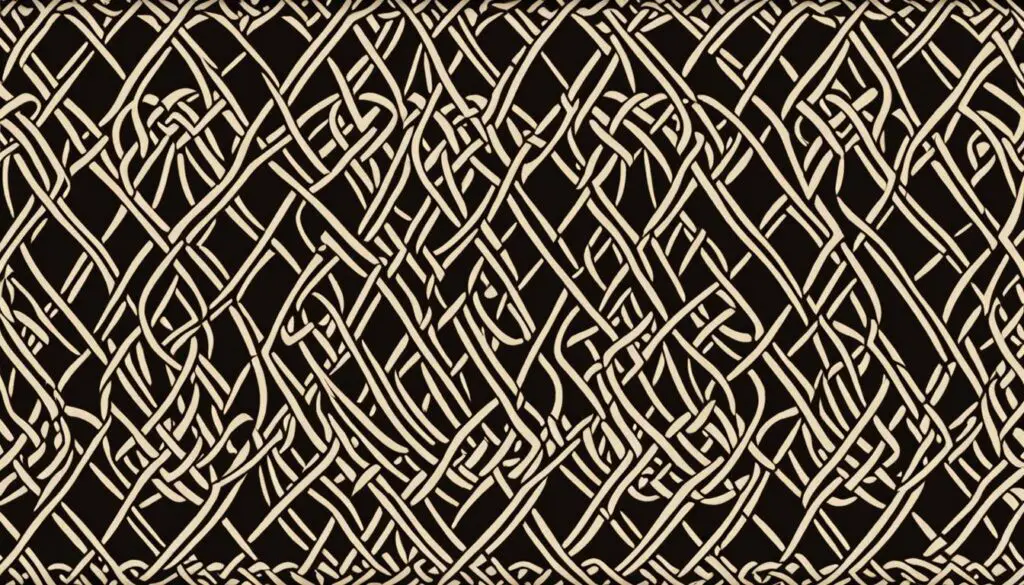
Celtic knots have a fascinating journey that spans centuries and cultures. These intricate patterns originated in the late Roman Empire and found their way to the British Isles during the early Christian era. The exchange of ideas between the indigenous Celtic people and Christian missionaries influenced the development of Celtic knots.
Their prominence grew during the Insular art style, a unique artistic movement characterized by intricate and decorative patterns. Celtic knots featured prominently in religious manuscripts, stone crosses, and jewelry. Their mesmerizing designs and spiritual symbolism captivated the hearts of many.
Celtic knots are closely associated with Irish and Scottish heritage, known for their rich cultural histories. However, these beautiful knots have also had a global influence, transcending geographical boundaries. They can be found in various cultures, including Welsh, Cornish, and even Islamic art. This cross-cultural presence reflects the interconnectedness of artistic and spiritual traditions throughout history.
The Artistry and Symbolism of Celtic Knot Design
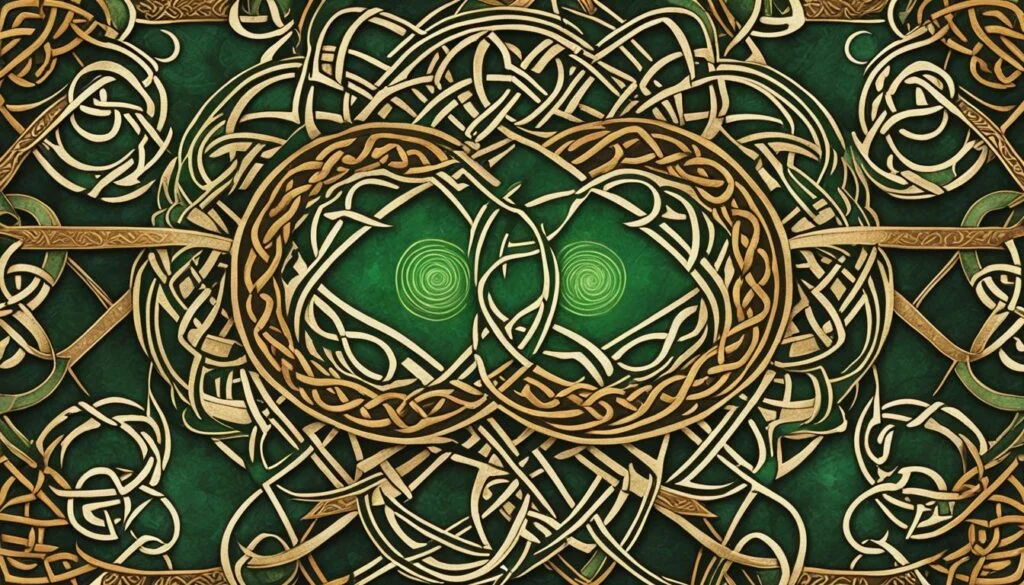
Celtic knots are renowned for their mesmerizing and intricate designs. These knots consist of interwoven lines and patterns, creating complex and captivating symbols that have significant meaning. While the precise interpretation of each knot can vary, they often symbolize the eternal cycle of life, encompassing birth, death, and rebirth. In Celtic culture, these knots represent the interconnectedness of all things in the universe and embody the unity of body, spirit, and mind.
The artistry of Celtic knot design showcases the deep spiritual beliefs and reverence for the natural world held by the Celts. Each knot is meticulously crafted, reflecting the attention to detail and dedication of the skilled artisans. Through their intricate work, Celtic craftsmen conveyed their understanding of the eternal flow of time and the interconnectedness of all beings.
Celtic knot designs can be found in various forms, including jewelry, artwork, and architecture. Their timeless beauty continues to captivate people around the world, transcending cultural boundaries. Whether depicted in a simple or elaborate design, each Celtic knot carries its own symbolic meaning and serves as a powerful reminder of the eternal cycles of life and the interconnected nature of all things.
Exploring Different Types of Celtic Knots
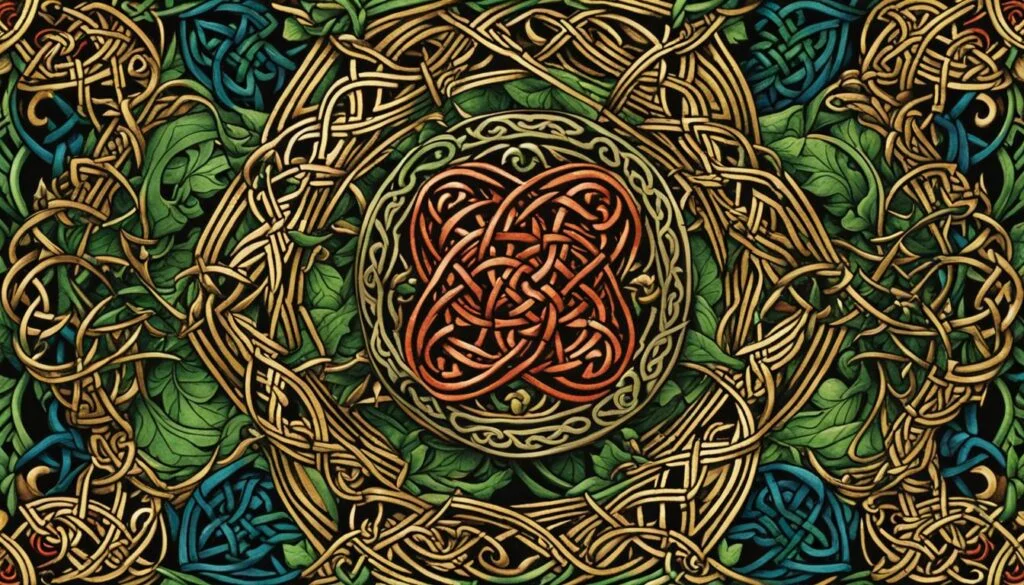
When it comes to Celtic knots, there is a wide variety of designs and symbolic meanings to explore. Each type of knot carries its own significance, adding depth and beauty to Celtic artwork and culture.
1. Single Path Knots: These are the simplest and oldest forms of Celtic knots. Representing an unending journey and eternal life, they have a timeless appeal.
2. Celtic Shield Knot: This knot symbolizes protection and strength. It was often used as a talisman or amulet to ward off negative energy and provide a sense of security.
3. Celtic Love Knot: Also known as the Anam Cara, the Celtic Love Knot represents the eternal nature of love and friendship. Its intertwining patterns symbolize the deep bond between two individuals.
4. Trinity Knot: The Trinity Knot features three points and can symbolize various trios, such as the Holy Trinity or the stages of life. It represents unity and the interconnectedness of mind, body, and spirit.
5. Quaternary Knot: This knot represents the four elements or cardinal directions. It signifies balance, harmony, and the interconnectedness of all things in the natural world.
6. Dara Knot: The Dara Knot symbolizes strength and power. It is often associated with oak trees, which were considered sacred by the ancient Celts.
7. Sailor’s Knot: This knot signifies unconditional love and the intertwined fate of two individuals. It reflects the enduring bond between sailors and their loved ones waiting for them at home.
These various types of Celtic knots showcase the intricacy and symbolism that make them special. Whether it’s a single path knot, a love knot, or a shield knot, each design carries its own meaning, allowing individuals to connect with the rich heritage of Celtic culture.
Animals and Mythological Creatures in Celtic Knots
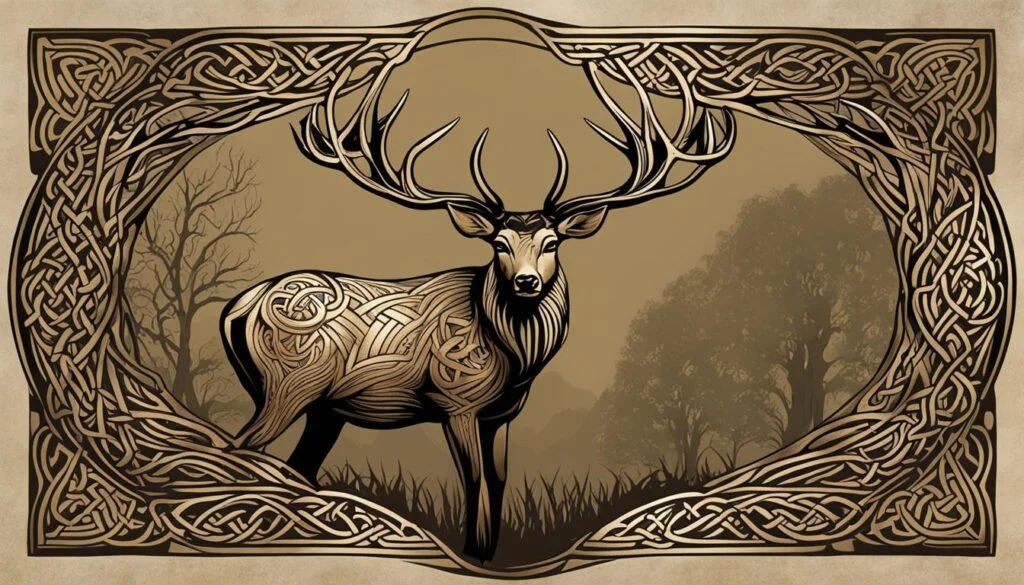
Animals and mythological creatures play a prominent role in Celtic knots and symbols, adding depth and symbolism to their intricate designs. These creatures have been closely intertwined with Celtic culture and carry their own significant meanings.
Birds: Symbols of Freedom
Birds hold a special place in Celtic culture, often symbolizing freedom and spirituality. Seen as messengers of heaven, they represent the connection between the earthly and divine realms.
Hares: Abundance and Prosperity
Hares are associated with abundance and prosperity in Celtic mythology. They symbolize fertility, luck, and the bountiful gifts of nature.
Snakes: Wisdom and Healing
In Celtic mythology, snakes are revered for their wisdom and healing abilities. They represent transformation, rebirth, and the hidden knowledge of the earth.
Deer: Sunlight and Strength
The deer symbolizes sunlight and strength in Celtic symbolism. It is associated with grace, nobility, and spiritual growth.
Boars: Strength and Hospitality
The boar represents strength, courage, and hospitality in Celtic culture. It symbolizes protection and the willingness to defend loved ones.
Bulls: Fertility and Prosperity
Bulls hold great significance in Celtic symbolism, representing fertility, abundance, and prosperity. They are revered by both men and women.
Dragons and Griffins: Magic and Power
Mythical creatures like dragons and griffins are often featured in Celtic knots, adding an element of magic and power. Dragons symbolize strength, wisdom, and the balance between the earthly and supernatural realms. Griffins, with their mixture of lion and eagle characteristics, represent royalty, guardianship, and protection.
Conclusion
Celtic knots are not merely beautiful designs, but they hold a deep cultural heritage and spiritual significance. These intricate patterns have transcended time and borders, becoming a testament to the enduring legacy of the Celtic culture. With their interwoven lines and complex symbolism, Celtic knots symbolize the eternal cycle of life and the interconnectedness of all things in the universe.
The meaning of each Celtic knot is open to interpretation, allowing individuals to find personal significance within the designs. Whether it’s the unity of body, spirit, and mind or a reflection of one’s cultural heritage, Celtic knots continue to be cherished and celebrated.
From the ancient Celts to modern times, the symbolism of Celtic knots has remained a powerful reminder of our shared human experiences and the importance of cultural identity. They serve as intricate reminders of the deep spirituality, artistry, and interconnectedness of the world around us.
FAQ
What do Celtic Knots represent?
Celtic Knots represent different elements of Celtic culture, such as spirit, deities, and mythological tales. They symbolize the eternal cycle of life and the interconnectedness of all things in the universe.
What is the history of Celtic Knots?
Celtic Knots originated in the late Roman Empire and spread to the British Isles during the early Christian era. They were influenced by the exchange of ideas between the indigenous Celtic people and Christian missionaries.
What is the significance of Celtic Knots in Celtic culture?
Celtic Knots were considered sacred symbols by the ancient Celts. They were believed to have powerful mystical power and were often used as amulets or talismans to protect against dark forces and bring good luck.
How do Celtic Knots represent the interconnectedness of all things?
The interwoven patterns of Celtic Knots symbolize the unity of body, spirit, and mind. They reflect the Celts’ deep connection to nature and their spiritual beliefs in the eternal cycle of life.
Where can Celtic Knots be found?
Celtic Knots can be found in monuments, manuscripts, stone crosses, and jewelry. They are commonly associated with Irish and Scottish heritage but also have a global influence, appearing in various cultures’ art.
What are the different types of Celtic Knots?
There are various types of Celtic Knots, including single path knots, Celtic Shield Knots, Celtic Love Knots, Trinity Knots, Quaternary Knots, Dara Knots, and Sailor’s Knots. Each knot has its own design and symbolic connotations.
What do animals and mythological creatures symbolize in Celtic Knots?
Animals such as birds, hares, snakes, deer, boars, bulls, dragons, and griffins add an element of symbolism and magic to Celtic Knots, representing various qualities and characteristics in Celtic mythology.
What is the cultural and spiritual significance of Celtic knots?
Celtic knots hold deep cultural and spiritual significance. They symbolize important values such as faith, love, loyalty, interconnectedness, and the eternal nature of life.
How are Celtic Knots interpreted?
The meaning of Celtic Knots is open to interpretation and can vary depending on the specific design and historical context. They can be interpreted in various ways based on individual beliefs and cultural associations.
What are ancient Celtic Knot designs?
Ancient Celtic Knot designs can be found in monuments, manuscripts, and artwork from ancient times. These intricate patterns showcase the Celts’ deep spiritual beliefs and their reverence for the natural world.


